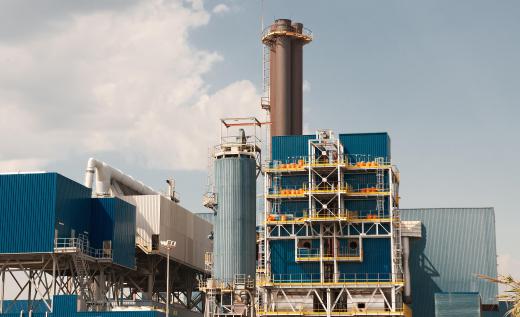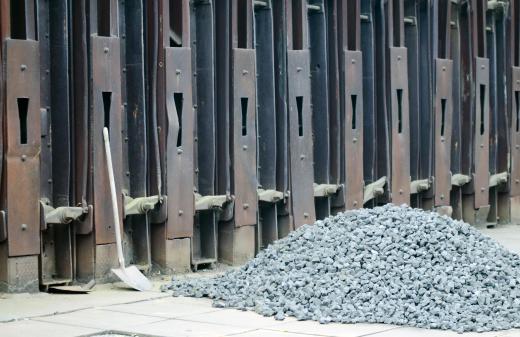A hydrogen sulfide (H2S) sensor is a gas sensor that can be built to several different design specifications for detecting levels of hydrogen sulfide created during industrial and biological processes. Such sensors are very important in various industries due to the fact that hydrogen sulfide is an extremely toxic gas. The inhalation of 500 to 1000 parts per million (ppm) by volume almost always results in immediate unconsciousness and death. Some hydrogen sulfide sensor units are single-use emergency components, whereas other H2S sensor designs are made to repeatedly detect the gas and last for many years.
Many industries have a need for the hydrogen sulfide sensor, but among the most common are the petrochemical industry where it is a natural byproduct of crude oil and natural gas production, and municipal sewage treatment plants. Related areas that produce hydrogen sulfide include fish farming or aquaculture, the storage of manure for fertilizer, and regions where volcanic gasses or hot springs exist. Refineries and coke oven plants that convert coal into coke through a process of heating it in an environment free of oxygen are also locations where a hydrogen sulfide sensor detection system is critical. Paper mills, steel mills, and tanneries also produce the gas, and, since it is a natural byproduct of the breakdown of organic matter by bacteria, it is also a potential danger in several types of food processing factories.

The ability to naturally detect dangerous yet very low levels of hydrogen sulfide in the air can be difficult for several reasons. One reason is that it is a colorless and transparent gas which is heavier than air, so that it tends to settle at low levels in buildings where it may initially go unnoticed. While it has a rotten-egg odor in low concentrations, the odor changes to a sweet one at higher levels, which can confuse the senses. There are, therefore, several different methods of detecting the gas in biological samples versus air or water concentrations.

A typical design for a continuous-use portable sensor is based on a microelectromechanical system (MEMs) fuel cell that can operate between a range of -22° to 122° Fahrenheit (-30° to 50° Celsius) and utilizes the principle of electrical resistance. The MEMs sensor is built upon a metal oxide semiconductor (MOS) material of microscopic tin oxide or gold metal films that respond to changes in electrical resistance as hydrogen sulfide gas passes them. Such sensors have fast response times and can be accurate down to 25 parts per billion (ppb), but, more often than not, they are designed to only detect higher levels of the gas. They are inexpensive, however, and are commonly deployed in rough climate conditions, such as in oil and gas prospecting and drilling.
A hydrogen sulfide sensor designed to detect the gas in water and sludge is also based on the principle of potentiometry, or changes in electromotive force in the water. Water detectors can measure gas levels at less than 0.3 ppb and are often built into standard pH meters used in the sewage treatment industry. They require frequent calibration to be accurate, however, which is usually scheduled once per month. A frequent drift sensor problem occurs with units required to measure such fine levels, which is an indication that the output reading being displayed is offset from the actual measured value. In a hydrogen sulfide sensor used in a liquid environment, a range of drift of ±0.5 millivolts (mV) is standard, but drift can often reach up to 2 mV in a month's time in the readouts.
Other types of hydrogen sulfide sensor designs are built into portable units carried by emergency services personnel that are capable of detecting other dangerous gasses such as carbon monoxide. Similar types of units placed in facilities are corrosion and explosive resistant, which are two properties of hydrogen sulfide gas. They are capable of operating for two to five years with very low power consumption and no degradation in continuous detection ability after being exposed to the gas.
The sensitivity level and response times of less than a minute have been enhanced in recent years for the hydrogen sulfide sensor by incorporating materials engineered at the nanometer scale. This supports new regulations in the US as of 2010. The American Conference of Governmental Industrial Hygienists (ACGIH) has reduced acceptable exposure levels to the gas for an eight-hour weighted average from 10 ppm to 1 ppm and a short-term exposure level of 15 ppm down to 5 ppm.
